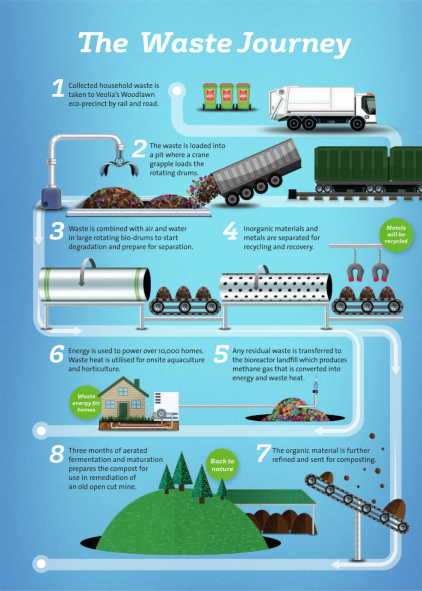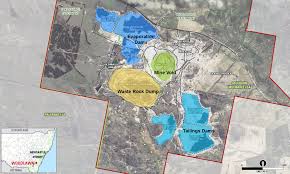Turning Sydney’s waste into resources

NSW Circular recently caught up with Henry Gundy, the Woodlawn Eco-Precinct Manager who runs the innovative and high-tech waste management system owned by Veolia at Goulburn, south of Sydney.
Below is a summary of how the bioreactor works by turning waste into resources, such as gas, growing salmon, do hydroponic horticulture, help run a farm, rehabilitating a mine site and much more. Here is a video where Henry tells NSW Circular about the big ideas behind the facility, its benefits and why adopting the principles of a circular economy are crucial in managing our waste and treating it as a resouce.
The challenge
Reducing landfill waste will continue to be one of the major challenges for local, regional and state authorities. Diverting domestic waste from landfill through sustainable waste management education, strategies and is critical in meeting the challenge to reduce demand on landfill facilities nationally.
In an effort to tackle the rising tide of putrescible waste in the Sydney region at the turn of the millennium, the then Minister of Planning approved a proposal from Veolia to develop a rail transfer terminal, to move waste from Sydney’s South, a landfill bioreactor and a MBT (Mechanical and Biological Treatment) facility at the Woodlawn site. Veolia was commissioned for the construction of a rail transfer terminal to Woodlawn from Clyde (21km south west of Sydney’s CBD). In addition to the highly efficient rail transfer terminal, Woodlawn’s landfill gas bioreactor came on-line in 2004.
The solution
The successful construction of a rail transfer terminal for Sydney’s waste and a new landfill gas bioreactor were the main building blocks of this value-chain facility and service. The Woodlawn facility is capable of accepting much more than the intended 20% of Sydney’s putrescible waste and is still recognised, 16 years later, as an example of best practice in municipal waste management and utilisation of leading landfill technology.
Since opening in 2004, over 4.1 Mt of waste has been processed at the facility, most of which has been used to generate green electricity. The latest figures published by Veolia in September 2017 reveal the impressive power generation capabilities of the bioreactor which is capable of meeting the energy requirements of up to Australian 30,000 homes.

Globally, bioreactor technology is still considered at the forefront of feasible clean energy production for existing waste management facilities. It is understood that for every megawatt of power produced by the Woodlawn bioreactor approximately 0.75 tonnes of physical waste is recycled and in the form of methane gas emissions leaving the physical waste material. Therefore, for every tonne of waste deposited at the facility 1.33 megawatts of clean electricity can be produced and used to power the facility, businesses, homes and municipal infrastructure.
The Woodlawn facility has prioritised sustainable and innovative waste management practices including:
- 7 landfill gas engines that recover up to 7 megawatts of clean energy from what would otherwise be gas-emitting waste material.
- Agriculture incorporating a working farm that applies nutrient and grazing rotation to help manage and understand impacts on the site.
- Aquaculture and horticulture capturing waste heat from energy production and using it for fish farming and hydroponic horticulture
- Mechanical and Biological Treatment (MBT) extracting organic content from the waste to produce compost for environmental rehabilitation.
- Windfarm (operated by Infigen Energy) that harnesses 48.3 megawatts of clean energy per year.
- Solarfarm utilising increased sun exposure from cleared land to produces 2.5 megawatts of clean energy per year.
Stage 1 of MBT facility is capable of processing up to 144,000 tonnes of waste per annum. This waste is transported by rail from Sydney to the Crisps Creek Intermodal facility and then transferred by road to the Woodlawn MBT facility. Based on waste audit data, it is expected that approximately 50-60% of the waste received will be diverted from landfill. After the organic material is recovered and converted into compost, remaining waste is delivered to the bioreactor for further energy recovery.
More information about Woodlawn Bioreactor and how it works please click here.
And see this story on how the Woodlawn Bioreactor was built.





